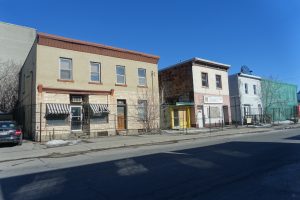Lauren Olsen has called her neighborhood on the western edge of Ottawa’s downtown core home for 30 years. But she’s not sure she wants to live in an area that, according to an analysis of the 2016 Census data, is shrinking faster than any other neighborhood in the nation’s capital
“They’ve turned the neighbourhood into slums, people are fed-up and leaving,” said local resident Lauren Olson.
The population the last four years in the Ottawa-Gatineau area increased by 5.5 per cent to 1.3 million according to the 2016 census. However, a few decreased.
A neighbourhood north of the Trans-Canada Highway, between Preston and Bronson Ave experienced the largest decrease at 15 per cent between 2011 and 2015.
However, Royce Fu, a city planner for Ottawa, says the decrease occurred because residential houses were emptied, sold and “fenced off” for high-rise development.
The city is currently reviewing six applications for apartments in the area. The six buildings would provide 365 housing units.
“We’ve identified that area as a priority for development. There’s a mix of activity there, a vibrancy, and we want to build on that,” said Fu.

While Olson acknowledges the increase for planned high rises, she blames the city for “forcing” people to move away.
She lives across the street from eight buildings slotted for demolition to make way for a 23-unit apartment.
“The high rise probably won’t come for years. Meanwhile, the buildings are condemned and failing apart. Rats have moved in,” says Olson.
The application for construction is pending. It was submitted in 2011.
Professor Benjamin Gianni from the School of Architecture at Carleton University says that while the city has targeted Little Italy and China Town for heavy growth due to the new O-train Confederation line, which is set to open in 2018, the re-zoning to allow closer-density living takes time.
“Many of the cities zoning bylaws are out of date. Revising them is slow. Until then, some construction plans will be on hold, “said Gianni.
Applying for building permits isn’t easy. There must be zoning reviews, urban design reviews, and a site plan approved long before construction documents are submitted for a building permit.
Just getting the permit to build an apartment building can take years.
Gianni says the short-term population decrease as a neighbourhood’s infrastructure changes is expected.
“When houses begin to be converted into high rises, that’s a sign that the area is becoming popular,” said Ian Soucy, a real estate broker in Little Italy.
However, Olson said she isn’t going to wait. She has pestered city hall for years. Written letters demanding the city “clean-up” and starts allowing construction projects to begin. Rather than just permitting slums to fester and flourish.
“I can’t let my daughter grow up here.” She’s been in the neighbourhood for 30 years.
Olson can buy a cheaper house in the suburbs with more land. Her current house is on the market for $520 000. She can buy a similar sized home for $474 000 in Sittsville. Except Sittsville comes with two acres. The view from the front window is forest, not boarded-up homes.
Of course, her move depends on whether she can sell.
“It’s hard to sell a house across the street from condemned buildings.”
She said some of her neighbours have also decided to go to the suburbs. Preferring a “white-picket fence “with a large backyard for their kids to the slums with rats next door.
“Families may come back. Maybe when the slums are gone.”
Time will tell.

